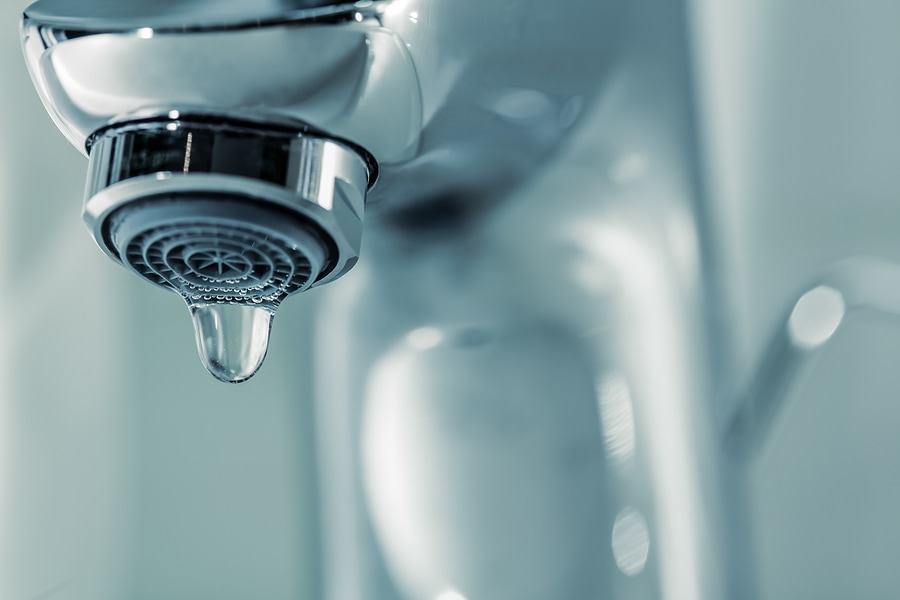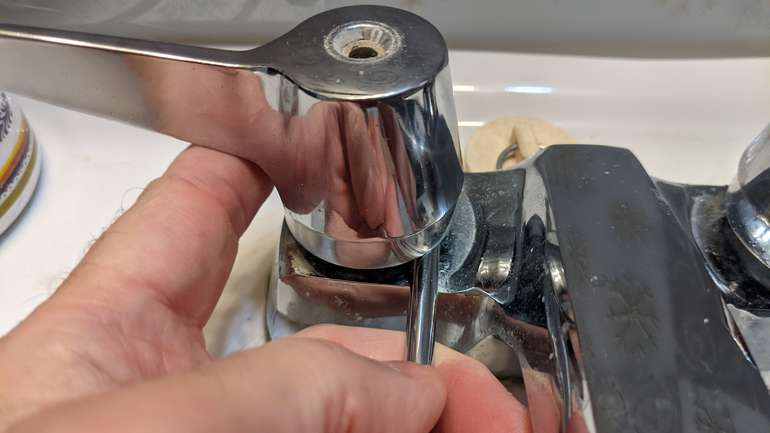In this article underneath you might get more really good news concerning Why Is It Important To Fix Your Leaking Tap/Faucet?.

Leaking taps could seem like a minor trouble, but their impact goes beyond simply the inconvenience of the noise. From drainage to sustaining unnecessary monetary costs and wellness dangers, ignoring a trickling faucet can lead to different consequences. In this write-up, we'll explore why it's crucial to address this common family concern immediately and efficiently.
Wastefulness of Water
Environmental Impact
Leaking faucets add substantially to water wastefulness. According to the Environmental Protection Agency (EPA), a solitary faucet leaking at one drip per second can waste greater than 3,000 gallons of water each year. This not just stress water resources but additionally affects environments and wildlife dependent on them.
Financial Expenses
Increased Water Bills
Past the environmental impact, trickling taps can blow up water bills substantially. The gathered wastage gradually translates right into greater energy costs, which can have been avoided with prompt repairs.
Prospective Property Damages
Additionally, extended leaking can cause damage to components and surfaces surrounding the tap. Water build-up can create staining, corrosion, and even architectural concerns if left unattended, resulting in extra repair work expenses.
Health and wellness Concerns
Mold and Mildew Development
The constant presence of moisture from a leaking faucet creates a perfect environment for mold and mildew and mildew development. These fungi not just jeopardize indoor air quality however also posture health dangers, particularly for people with respiratory system conditions or allergies.
Waterborne Illness
Stagnant water in dripping faucets can come to be a breeding place for germs and various other microorganisms, raising the risk of waterborne illness. Pollutants such as Legionella microorganisms flourish in stagnant water, potentially resulting in major health problems when ingested or breathed in.
Do it yourself vs. Professional Repair work
Advantages and disadvantages of DIY Fixing
While some might try to deal with a trickling tap themselves, do it yourself repair work feature their very own set of difficulties. Without correct knowledge and devices, do it yourself attempts can aggravate the problem or bring about incomplete repair work, prolonging the problem.
Benefits of Hiring a Professional Plumber
Hiring a specialist plumber makes sure that the underlying source of the dripping faucet is dealt with effectively. Plumbings possess the expertise and devices to diagnose and repair tap problems successfully, saving time and lessening the danger of more damages.
Step-by-Step Guide to Fixing a Dripping Tap
Tools Needed
Prior to attempting to deal with a dripping faucet, collect the necessary tools, including a flexible wrench, screwdrivers, replacement parts (such as washing machines or cartridges), and plumber's tape.
Usual Faucet Issues and Their Solutions
Recognize the type of tap and the details issue creating the drip. Usual issues consist of damaged washers, rusty shutoff seats, or defective O-rings. Describe producer instructions or online tutorials for detailed support on repairs.
Safety nets
Normal Maintenance Tips
To prevent dripping faucets, do routine upkeep such as cleansing aerators, checking for leaks, and replacing damaged parts quickly. In addition, consider setting up water-saving gadgets or upgrading to a lot more reliable components.
Value of Prompt Fixes
Attending to dripping faucets as quickly as they're seen avoids additional water wastefulness and possible damage, eventually conserving both water and money over time.
Effect On Building Value
Perception of Well-Maintained Residential Or Commercial Property
Preserving a residential or commercial property in good condition, consisting of addressing upkeep concerns like dripping taps, boosts its viewed value and worth among prospective buyers or tenants.
Influence on Resale Worth
Qualities with well-maintained plumbing components, including taps, command greater resale values in the realty market. Resolving dripping taps can contribute to a favorable perception throughout residential or commercial property examinations and arrangements.
Environmental Obligation
Specific Payment to Conservation
Taking responsibility for fixing dripping taps straightens with broader initiatives toward water preservation and environmental sustainability. Every individual's actions collectively make a substantial impact on preserving priceless sources.
Sustainable Living Practices
By focusing on prompt repair work and adopting water-saving habits, individuals contribute to sustainable living techniques that benefit both present and future generations.
Final thought
Resolving a leaking tap surpasses plain ease; it's a crucial step towards conserving water, decreasing financial costs, and safeguarding wellness and property. Whether with do it yourself repair services or specialist assistance, acting to deal with trickling faucets is a little yet impactful method to advertise accountable stewardship of resources and contribute to a healthier, extra lasting future.
How to Fix a Dripping or Leaky Faucet
A leaking faucet is one of the most common problems that homeowners encounter, but it being commonplace doesn’t make it any less annoying. The constant drip drip drip of a leaking bathtub faucet, showerhead, or sink tap can disturb your home’s serenity. Left neglected, a dripping faucet can also result in higher water bills and discoloration or mold growth in your sink or plumbing fixtures.
Fortunately, you don’t have to be a trained plumber to know how to stop a dripping faucet. With some basic tools, replacement parts, and a little patience, leaky faucet repair is a breeze. In this article, we’ll explain what causes dripping faucets and how you can fix them.
What Causes a Leaking Faucet?
Kitchen and bathroom faucets come in all manner of designs, but most involve some combination of valves, O-rings, seals, and washers. The O-ring is usually the weakest link, but any one of these pieces can wear down over time. Heat, moisture, temperature fluctuations, minerals, mold, and movement can contribute to warping and corrosion, breaking the watertight seal. This just comes with the territory of being a homeowner. Everything is always subject to wear and tear, and some component parts of your appliances and fixtures need to be replaced on occasion. At least replacement O-rings are cheap!
More rarely, dripping faucets can be a symptom of excessively high water pressure. Were this the case in your home, you would probably notice that the leak is not isolated to one faucet. Water pressure issues are harder to resolve on your own. We recommend contacting a professional plumber if you suspect your water pressure is too high.
How to Fix a Dripping Faucet
Pipe wrench or monkey wrench Allen wrench set Screwdrivers Old towel or rag Shut off the water.
Before you do anything, you need to turn off the water to keep from drenching your kitchen or bathroom. You should find a valve under the sink and against the wall. Once you’ve turned this valve, try turning the faucet on to confirm that the water source has been cut off.
If you can’t locate your local valve for the faucet you’re working on, you can always shut off the water to the house at the main valve. Of course, this will prohibit anyone from using the sinks, showers, or toilets while you’re working on the faucet that’s giving you trouble.
Plug or block the drain.
You’ll be disassembling the faucet and removing some small bits of hardware. Plug the drain with a stopper or rag to avoid the possibility of a small screw falling into your P-trap.
Take apart the faucet assembly.
There are several varieties of kitchen and bathroom faucets, each with its own manner of assembly. For detailed instructions on how to disassemble your faucet, you can refer to the fixture’s manual or contact the manufacturer. If you know whether you have a ball, disc, cartridge, or compression faucet, you can find detailed schematics online.
In general, you need to begin by removing the faucet handles. You might notice a small screw that you’ll need to remove with a screwdriver or Allen wrench. If you don’t see any visible securing hardware, it’s likely hidden under a decorative cap that can be unscrewed or popped off with flathead screwdriver.
Remove each piece methodically, consulting a schematic when necessary. Take notes or arrange the pieces in such a way to make it easier to correctly reassemble the faucet later.
Remove the cartridge.
Once you’ve removed the handles and securing hardware, you should be able to remove the valve cartridge or stem. Some cartridges will slide right out. Other faucet models will require you to loosen a nut with a pipe wrench before you can remove the valve stem.
Examine the exposed hardware.
With the cartridge or stem removed, inspect the component parts. Check the rubber O-rings for wear and tear. Also examine the seat washer for corrosion or other damage. These pieces are usually the responsible parties for a dripping faucet, but it’s worth inspecting the other component parts while you have the faucet disassembled.
Find replacement parts.
Once you’ve identified which faucet component has failed, find an identical replacement. Your local hardware store should have O-rings, seat washers, and other standard components in stock. If you have a luxury or uncommon faucet, you may have to contact the manufacturer for a replacement part.
It’s a good idea to take your old parts with you to the hardware store so you can compare them with the store’s inventory and be sure you’re purchasing the correct replacement.
Reassemble the faucet.
With your new parts in hand, reconstruct the faucet and handles. Don’t be tempted to overtighten screws or nuts. You might think this could create a better seal, but it can instead damage or bend a delicate part of the assembly and create a new problem for you.
Turn on the water and test the faucet.
The only thing left to do is test your work. Unplug the sink, turn the water back on, and try the faucet. Congratulate yourself on a job well done!
https://www.libertyhomeguard.com/how-to-fix-a-dripping-or-leaky-faucet/

As a keen reader about Should I Repair or Replace a Leaky Faucet?, I think sharing that portion was worth the trouble. Liked our piece of writing? Please quickly share it. Let another person discover it. We love reading our article about 4 Common Reasons for a Leaky Faucet.